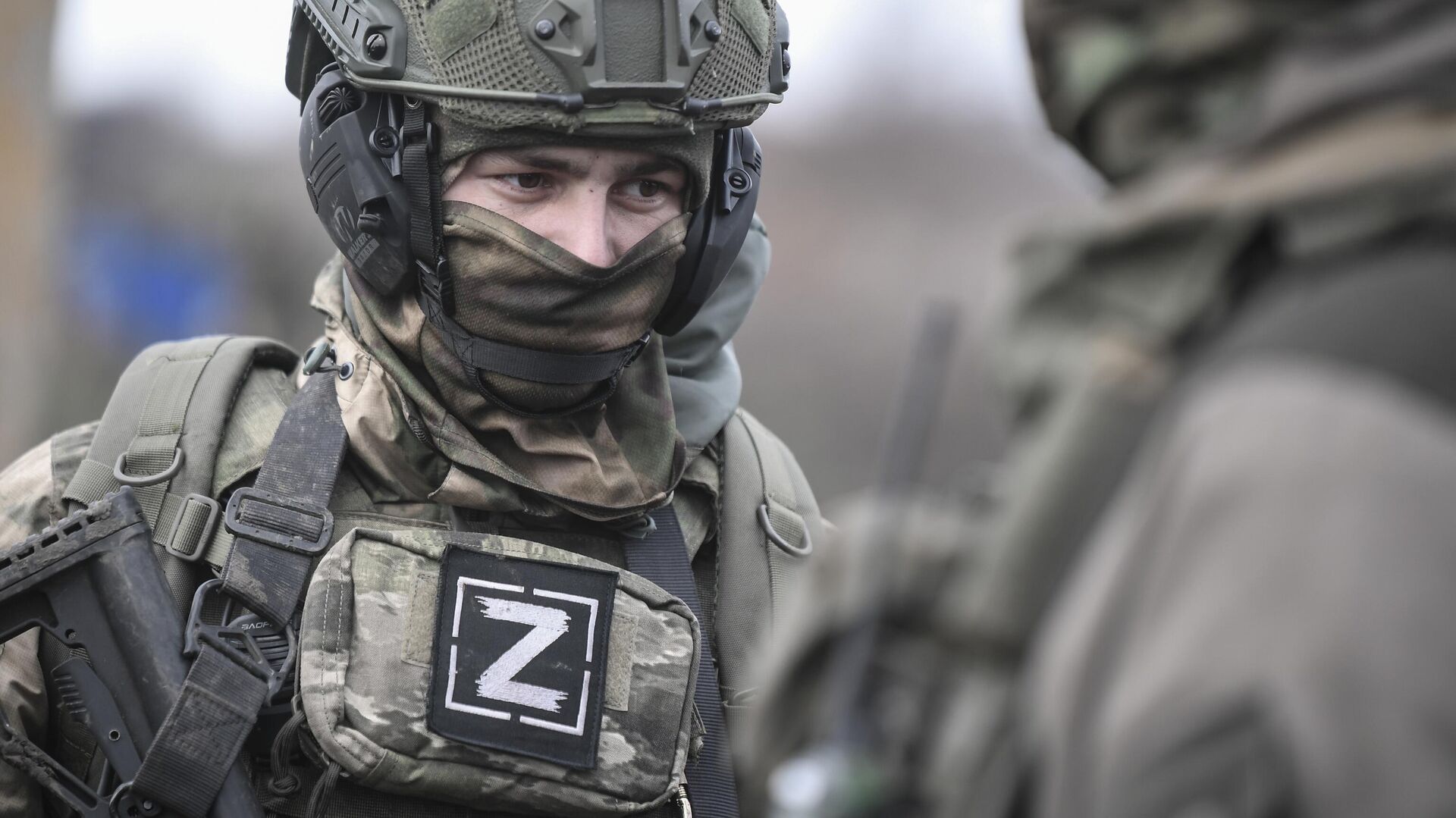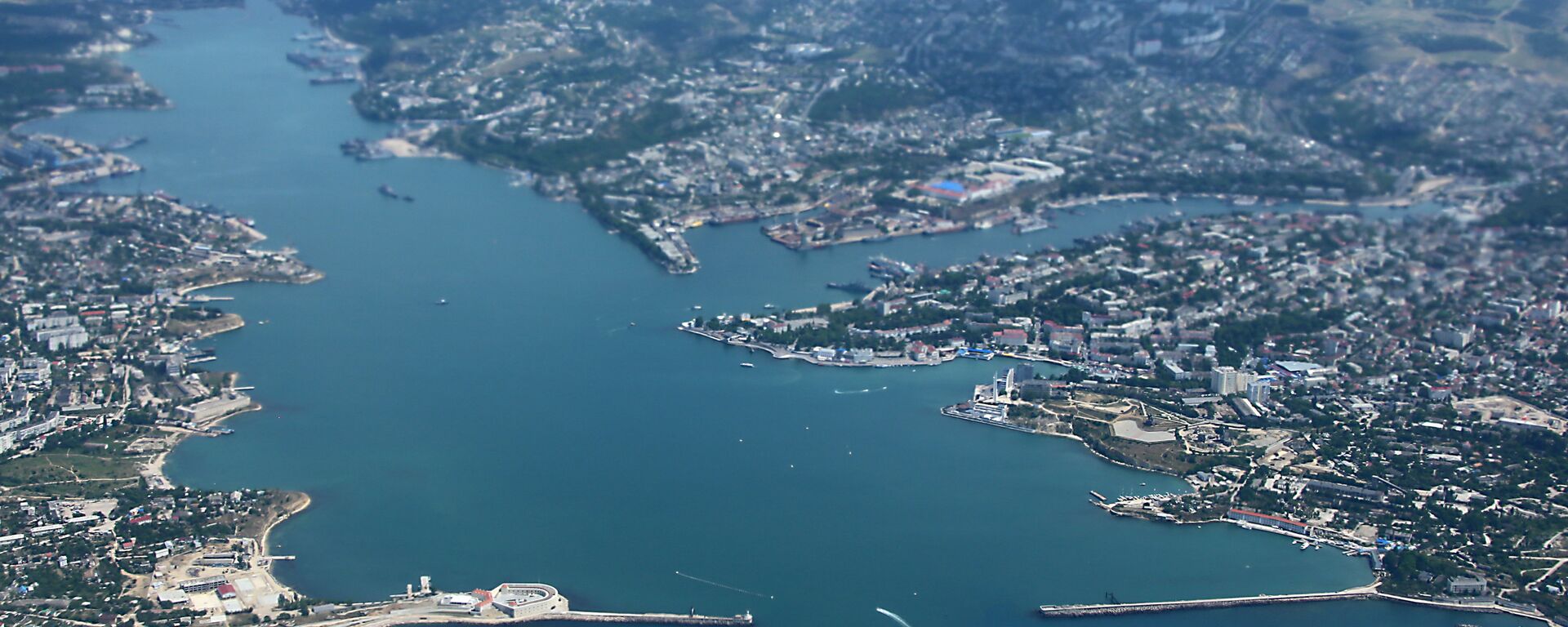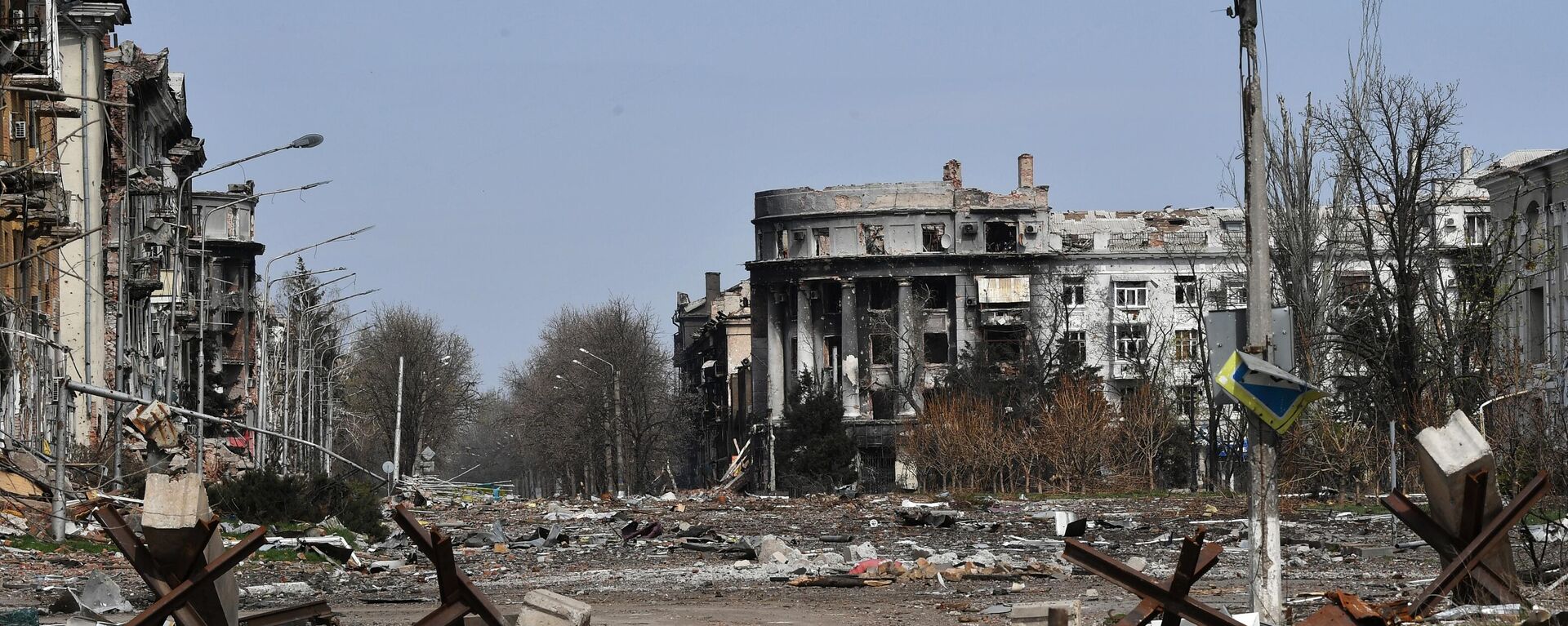https://sputnikglobe.com/20230413/scott-ritter-pentagon-leaks-show-that-ukraine-cant-win--1109484135.html
Scott Ritter: Pentagon Leaks Show That Ukraine Can’t Win
Scott Ritter: Pentagon Leaks Show That Ukraine Can’t Win
Sputnik International
Anyone who has been following the ongoing Russian Special Military Operation (SMO) in Ukraine is aware that there has been talk of a Ukrainian “spring offensive” for some time now.
2023-04-13T16:00+0000
2023-04-13T16:00+0000
2023-06-19T12:48+0000
analysis
pentagon leaks
special operation
russia
ukraine
ukrainian crisis
https://cdn1.img.sputnikglobe.com/img/07e7/01/09/1106153931_0:161:3071:1888_1920x0_80_0_0_db7530db80358f8e98aea2f631ee4a45.jpg
Since early fall of last year, the government of Ukraine has been aggressively advocating for increased provision of specific kinds of military equipment—tanks, artillery, infantry fighting vehicles, and modern jet aircraft top the list—which would enable the armed forces of Ukraine to execute a major military offensive designed to penetrate the so-called “land bridge” connecting the Crimean Peninsula with Russia’s Rostov region. In particular, the Ukrainian military appears to be planning for a concerted attack to capture the city of Mariupol and re-establish itself on the shores of the Sea of Azov. From here, the Ukrainian military would be able to subject the totality of the Crimean Peninsula to punishing attacks, the goal of which would be to break the fighting spirit of Russia and eventually drive the Russian military from all the former territories of Ukraine that were incorporated into Russia following the referenda of 2022, as well as Crimea.To this end, significant quantities of military equipment, including hundreds of tanks, infantry fighting vehicles, and artillery systems, and thousands of wheeled combat support vehicles, were pledged to the Ukrainian effort, along with the training and logistical support required to transform promised support into reality. When all the promised material was matched to announced training support, it was clear that the US, NATO, and Ukraine were planning for a major offensive capability to be ready for use sometime in late April-early May of 2023.All the information listed above was available through publicly available sources, and as such was not unknown to Russian military planners. Moreover, Russian military intelligence has undoubtedly made use of Russia’s extensive intelligence gathering potential to produce their own assessments of US, NATO, and Ukrainian capability and intent as it regards a potential Ukrainian spring counteroffensive. As such, when documents sourced to the US Department of Defense began appearing on social media platforms that purported to show sensitive US intelligence assessments regarding various aspects of the military preparations underway for a Ukrainian spring counteroffensive, the existence of such plans did not take anyone by surprise. One of the main things that jumps out from the leaked documents is the fact that the timeline for organizing, equipping, and training the Ukrainian military formations earmarked for a spring counteroffensive is too aggressive—in short, it is unlikely that these forces would be able to achieve 100 percent readiness, or anything closely resembling that, in time to meet the anticipated late April 2023 launch date. Moreover, the documents suggest that the heavy fighting centered on the city of Artemovsk (Bakhmut) is a major drain of Ukrainian military resources, strongly suggesting that any forces that have been trained and equipped with the expectation of participating in a spring counteroffensive would more than likely find themselves diverted to the Artemovsk (Bakhmut) meatgrinder, or other hot spots along the extended line of contact between Ukrainian and Russian forces.The other disconcerting news, as far as the US, NATO, and Ukrainian military planners are concerned, is the status of two major sub-sets of material that are essential if Ukraine was to have any chance of successfully executing a major spring counteroffensive—air defense and artillery ammunition inventories. The leaked documents reveal the dismal status of on-hand supplies of both air defense missiles—particularly the Soviet-era systems that are the mainstay of the Ukrainian air defense network—and western artillery rockets and 155mm artillery shells. In short, the Ukrainians are expected to exhaust their supply of both soon, and there is little hope of achieving a meaningful resupply capability in time to support a late April-early May schedule for initiating a spring offensive.The consequences of these deficiencies are fatal not just to Ukraine’s hope of a spring counteroffensive, but Ukraine’s military position. As the leaked documents reveal, Russia is already deploying stand-off precision aerial bombs that are destroying Ukrainian troop and material assembly points behind the front lines free from any fear of Ukrainian air defense systems—the Russians are simply releasing the bombs outside of the effective range of Ukrainian surface-to-air missiles. Once Ukraine’s supply of Soviet-era missiles are exhausted, the Russian air force will have virtually free range over Ukraine, increasing both the scope, scale, and lethality of its air interdiction campaign. This will prove to be devastating for any Ukrainian counteroffensive force—without an effective air defense umbrella overhead, these forces will become little more than sitting ducks for the Russian military. The counteroffensive, in short, will die before it can even begin.The other problem that emerges from the leaked documents is the fact that Ukraine is expending US- and NATO-supplied ammunition—HIMARS rockets and 155mm artillery shells—at a rate far greater than can be resupplied. The success of any potential spring counteroffensive is centered on Ukraine’s ability to suppress/neutralize Russian defensive positions, silence Russian artillery, disrupt Russian command and control and logistics, and breakup any Russian counterattacking force. This can only be done through the extensive application of precision artillery fires. While Ukraine has demonstrated that, when provided with western artillery systems and western intelligence, it is able to carryout deadly attacks against Russian forces, these impressive capabilities mean nothing if the guns seeking to put steel on the targets identified by western intelligence lack ammunition. According to the leaked documents, this is a real problem, one which the US and NATO are working overtime to fix. The prognosis of the critical shortfall in artillery ammunition being rectified in time for a spring counteroffensive is, however, not good.All these shortfalls were identified and discussed openly before the leak of the Pentagon documents. What the documents provide, however, is official corroboration of these publicly held concerns, helping expose the lies and distortions of truth that have been told by senior US and NATO officials about the efficacy of a Ukrainian counteroffensive. By exposing the malfeasance of these officials, who appear more than happy to see Ukraine sacrifice the lives of tens of thousands more of its soldiers in a lost cause rather than encourage a negotiated settlement to the conflict which, while politically unpalatable for the US, NATO, and Ukraine, would at this juncture represent the best outcome available—better by far than the position these parties will find themselves in once Ukraine’s military has been destroyed and Russian forces push even further westward into Ukraine.And here we may find the purpose behind these leaks—someone privy to the data that exposes the lies of the US government and its NATO allies, and who believes that, if the public were made aware of these lies, pressure could be brought to bear to prevent the needless sacrifice of additional lives in support of a military mission—the spring counteroffensive—which is doomed from the start.One can only hope that this gambit succeeds.
https://sputnikglobe.com/20230407/us-congressman-ukrainian-spring-offensive-to-show-whether-crimea-off-table-for-kiev--1109247941.html
https://sputnikglobe.com/20230412/trying-to-hold-artemovsk-is-detrimental-to-ukrainian-military---security-analyst-1109389110.html
https://sputnikglobe.com/20230413/recent-us-arms-packages-for-ukraine-will-be-last-ones-for-foreseeable-future---reports-1109479734.html
russia
ukraine
Sputnik International
feedback@sputniknews.com
+74956456601
MIA „Rossiya Segodnya“
2023
Scott Ritter
https://cdn1.img.sputnikglobe.com/img/07e6/0c/17/1105733958_0:0:334:334_100x100_80_0_0_b457e4e9c850ef224b0cc79059bb38df.jpg
Scott Ritter
https://cdn1.img.sputnikglobe.com/img/07e6/0c/17/1105733958_0:0:334:334_100x100_80_0_0_b457e4e9c850ef224b0cc79059bb38df.jpg
News
en_EN
Sputnik International
feedback@sputniknews.com
+74956456601
MIA „Rossiya Segodnya“
Sputnik International
feedback@sputniknews.com
+74956456601
MIA „Rossiya Segodnya“
Scott Ritter
https://cdn1.img.sputnikglobe.com/img/07e6/0c/17/1105733958_0:0:334:334_100x100_80_0_0_b457e4e9c850ef224b0cc79059bb38df.jpg
ukrainian counteroffensive, spring offensive, special military operation, scott ritter comments, pentagon leaks on ukraine conflict
ukrainian counteroffensive, spring offensive, special military operation, scott ritter comments, pentagon leaks on ukraine conflict
Scott Ritter: Pentagon Leaks Show That Ukraine Can’t Win
16:00 GMT 13.04.2023 (Updated: 12:48 GMT 19.06.2023) Anyone who has been following the ongoing Russian Special Military Operation (SMO) in Ukraine is aware that there has been talk of a Ukrainian “spring offensive” for some time now.
Since early fall of last year, the government of Ukraine has been aggressively advocating for increased provision of specific kinds of military equipment—tanks, artillery, infantry fighting vehicles, and
modern jet aircraft top the list—which would enable the armed forces of Ukraine to execute a
major military offensive designed to penetrate the so-called “land bridge” connecting the Crimean Peninsula with Russia’s Rostov region. In particular, the Ukrainian military appears to be planning for a concerted attack to capture the city of Mariupol and re-establish itself on the shores of the Sea of Azov. From here, the Ukrainian military would be able to subject the totality of the Crimean Peninsula to punishing attacks, the goal of which would be to break the fighting spirit of Russia and eventually drive the Russian military from all the former territories of Ukraine that were incorporated into Russia following the referenda of 2022, as well as Crimea.
While US military leaders questioned whether Ukraine would be able to achieve such ambitious objectives in the time frame suggested (i.e., by the fall of 2023), both the US and NATO believed that a major Ukrainian counteroffensive was necessary, if only to reverse Russian momentum and further bloody Russia’s nose.
To this end, significant quantities of military equipment, including hundreds of tanks, infantry fighting vehicles, and artillery systems, and thousands of wheeled combat support vehicles, were pledged to the Ukrainian effort, along with the training and logistical support required to transform promised support into reality. When all the promised material was matched to announced training support, it was clear that the US, NATO, and Ukraine were planning for a major offensive capability to be ready for use sometime in late April-early May of 2023.
All the information listed above was available through publicly available sources, and as such was not unknown to Russian military planners. Moreover, Russian military intelligence has undoubtedly made use of Russia’s extensive intelligence gathering potential to produce their own assessments of US, NATO, and Ukrainian capability and intent as it regards a potential Ukrainian spring counteroffensive. As such, when
documents sourced to the US Department of Defense began appearing on social media platforms that purported to show sensitive US intelligence assessments regarding various aspects of the military preparations underway for a Ukrainian spring counteroffensive, the existence of such plans did not take anyone by surprise.
What was important, however, was the insights these documents provided into the nuts and bolts of the support being provided to Ukraine, including data and analysis that suggests Ukraine may not be up to the task of pulling off a limited-scope attack, let alone one designed to bring Russia to its knees.
One of the main things that jumps out from the
leaked documents is the fact that the timeline for organizing, equipping, and training the Ukrainian military formations earmarked for a spring counteroffensive is too aggressive—in short, it is unlikely that these forces would be able to achieve 100 percent readiness, or anything closely resembling that, in time to meet the anticipated late April 2023 launch date. Moreover, the documents suggest that the
heavy fighting centered on the city of Artemovsk (Bakhmut) is a major drain of Ukrainian military resources, strongly suggesting that any forces that have been trained and equipped with the expectation of participating in a spring counteroffensive would more than likely find themselves diverted to the Artemovsk (Bakhmut) meatgrinder, or other hot spots along the extended line of contact between Ukrainian and Russian forces.
The other disconcerting news, as far as the US, NATO, and Ukrainian military planners are concerned, is the status of two major sub-sets of material that are essential if Ukraine was to have any chance of successfully executing a major spring
counteroffensive—air defense and artillery ammunition inventories. The leaked documents reveal the dismal status of on-hand supplies of both air defense missiles—particularly the Soviet-era systems that are the mainstay of the Ukrainian air defense network—and western artillery rockets and 155mm artillery shells. In short, the Ukrainians are expected to exhaust their supply of both soon, and there is little hope of achieving a meaningful resupply capability in time to support a late April-early May schedule for initiating a spring offensive.
The consequences of these deficiencies are fatal not just to Ukraine’s hope of a spring counteroffensive, but Ukraine’s military position. As the leaked documents reveal, Russia is already
deploying stand-off precision aerial bombs that are destroying Ukrainian troop and material assembly points behind the front lines free from any fear of Ukrainian air defense systems—the Russians are simply releasing the bombs outside of the effective range of Ukrainian surface-to-air missiles. Once Ukraine’s supply of Soviet-era missiles are exhausted, the Russian air force will have virtually free range over Ukraine, increasing both the scope, scale, and lethality of its air interdiction campaign. This will
prove to be devastating for any Ukrainian counteroffensive force—without an effective air defense umbrella overhead, these forces will become little more than sitting ducks for the Russian military. The counteroffensive, in short, will die before it can even begin.
The other problem that emerges from the leaked documents is the fact that Ukraine is expending US- and NATO-supplied ammunition—HIMARS rockets and 155mm artillery shells—at a rate far greater than can be resupplied. The success of any potential spring counteroffensive is centered on Ukraine’s ability to suppress/neutralize Russian defensive positions, silence Russian artillery, disrupt Russian command and control and logistics, and breakup any Russian counterattacking force. This can only be done through the extensive application of precision artillery fires. While Ukraine has demonstrated that, when
provided with western artillery systems and western intelligence, it is able to carryout deadly attacks against Russian forces, these impressive capabilities mean nothing if the guns seeking to put steel on the targets identified by western intelligence lack ammunition. According to the leaked documents, this is a real problem, one which the US and NATO are working overtime to fix. The prognosis of the critical shortfall in artillery ammunition being rectified in time for a spring counteroffensive is, however, not good.
All these shortfalls were identified and discussed openly before the leak of the Pentagon documents. What the documents provide, however, is official corroboration of these publicly held concerns, helping expose the lies and distortions of truth that have been told by senior US and NATO officials about the efficacy of a Ukrainian counteroffensive. By exposing the malfeasance of these officials, who appear more than happy to see Ukraine sacrifice the lives of tens of thousands more of its soldiers in a lost cause rather than encourage a negotiated settlement to the conflict which, while politically unpalatable for the US, NATO, and Ukraine, would at this juncture represent the best outcome available—better by far than the position these parties will find themselves in once Ukraine’s military has been destroyed and Russian forces push even further westward into Ukraine.
And here we may
find the purpose behind these leaks—someone privy to the data that exposes the lies of the US government and its NATO allies, and who believes that, if the public were made aware of these lies, pressure could be brought to bear to prevent the needless sacrifice of additional lives in support of a military mission—the spring counteroffensive—which is doomed from the start.
One can only hope that this gambit succeeds.






